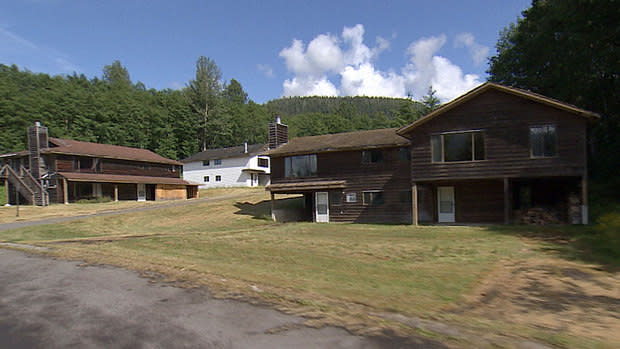Can a ghost town be resurrected?
A U.S. businessman wants to turn Kitsault, B.C., into a natural gas hub

Across the county, there are a very few success stories of revitalizing ghost towns or depressed mining communities.
There are some: Elliot Lake. Ont., for example, transformed itself from a uranium mining community into a retirement village. Kimberly, B.C., once home to a major copper mine, is now a tourist destination with golf courses and ski hills. And, Kitimat, B.C., has once again become a boomtown by selling hydro instead of processing aluminum.
Now Virginia-based businessman Krishnan Suthanthiran wants to emulate those successes in his coastal town of Kitsault, B.C..
Kitsault – located 800 km northwest of Vancouver – is not unlike many other ghost towns in Canada.
Its story began in 1980: Amax Canada claimed the 350 acres of land to extract molybdenum, a metal used to harden steel. The mining company spent $50 million to build homes, roads, a school, a hospital, a shopping mall and even a rec centre for its 1,200 miners and their families. Unfortunately, by 1982, the price of molybdenum plummeted, the mine closed down and everybody packed up and left.
Unlike most other ghost towns, however, Kitsault’s story might just have another chapter.
Suthanthiran bought the abandoned town – land, roads, homes and all – for $7 million in 2005 with a vision of creating a world-class eco-retreat for the world’s artists and scientists.
He now has a much more ambitious plan: he wants to turn his idyllic town into a hub for the province’s burgeoning liquefied natural gas industry.
What’s missing in Kitsault, like a lot of other ghost towns, is having economic activity.
— Krishnan Suthanthiran
“What’s missing in Kitsault, like a lot of other ghost towns, is having economic activity,” he says.
“In the last 9 months, I’ve been trying to bring in some economic activity. As I was doing some research, I discovered that our town is probably the best site for bringing a natural gas pipeline to the West Coast.”
B.C.’s Liberal government recently committed $115.8 million to the construction of 12 new natural gas infrastructure projects in the northeastern part of the province. The government predicts huge Asian demand for natural gas over the next 30 years, generating over 100,000 jobs and $200 billion in royalties.
Suthanthiran believes that boom is the best economic driver for Kitsault.
His strategy includes building a natural gas pipeline to his town, building a floating refinery to turn natural gas into a super-cooled liquid and building a terminal port to facilitate shipping the liquefied natural gas (LNG) to Asia.
And the price tag for this ambitious plan?

“The multi-phased program could cost as much as $30 billion,” he says, noting that he is seeking financial partners in both North America and Asia.
“We’ve been travelling to Asia and talking to people. There’s a lot of interest from mid-stream partners like the buyers [who] want to get an equity stake.
“We have a memorandum of understanding signed with one of the Asian partners. We also have an export order for the LNG.”
Suthanthiran acknowledges that he still faces many hurdles – he needs to complete his financing, he needs environmental and logistical approvals from the provincial government, and he needs First Nations communities to agree with the plan.
Despite the challenges, he says that he’s confident that the town of Kitsault will be resurrected within five years.
“By 2018 we will have 1,000 employees and families living there,” he says.
If Suthanthiran succeeds, Kitsault will certainly be a success story as one of the few mining communities that have gone from boom to bust and back to boom.


